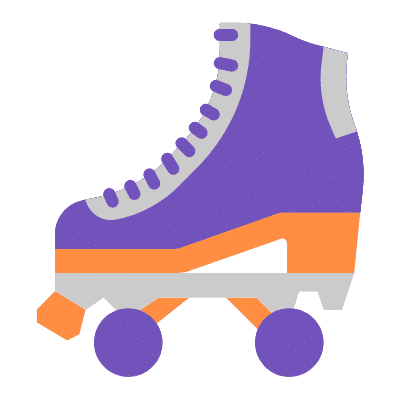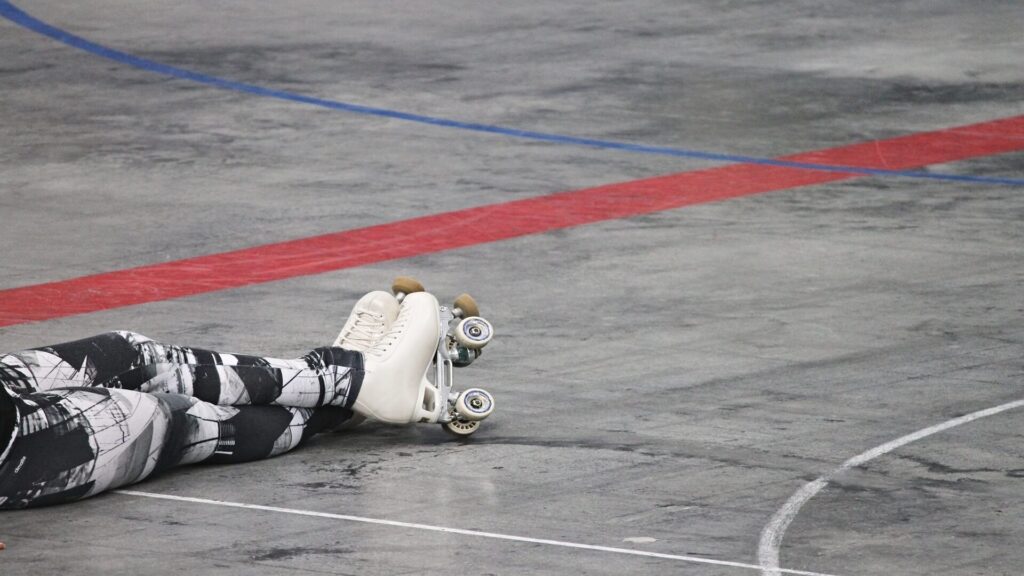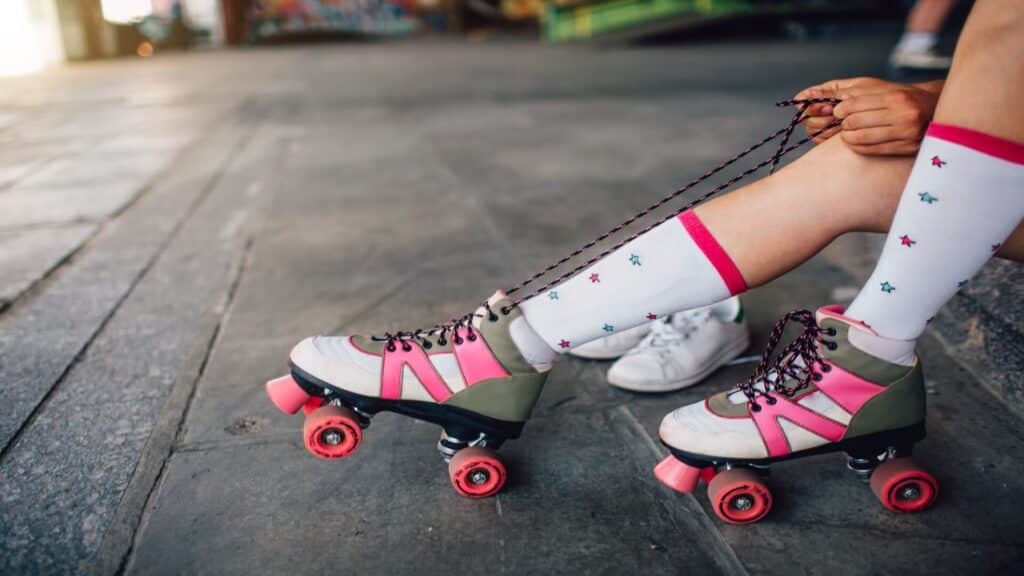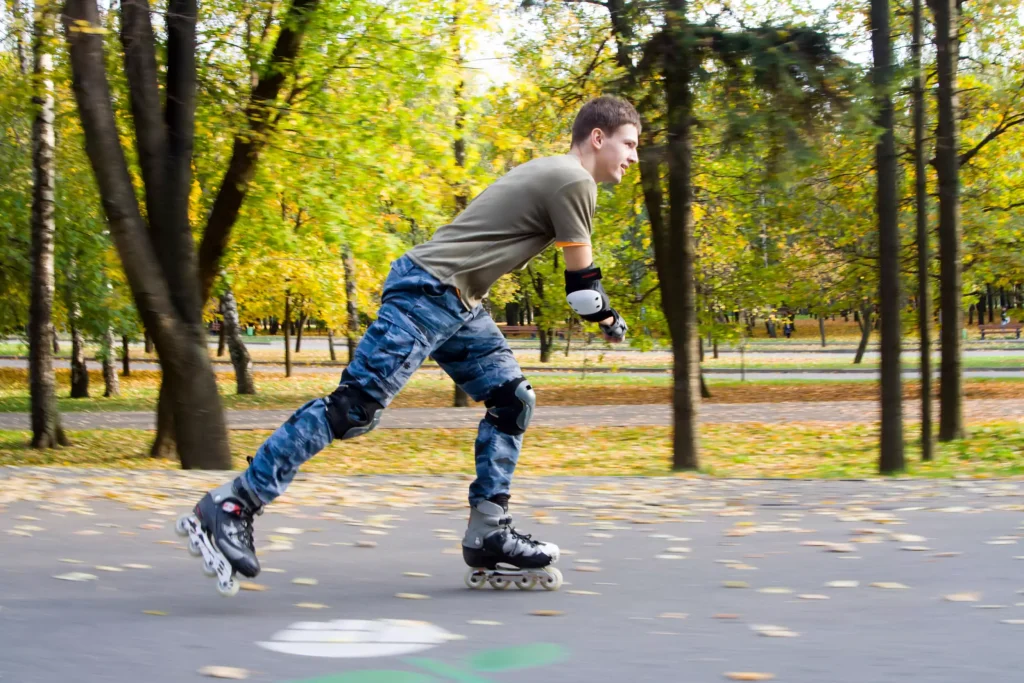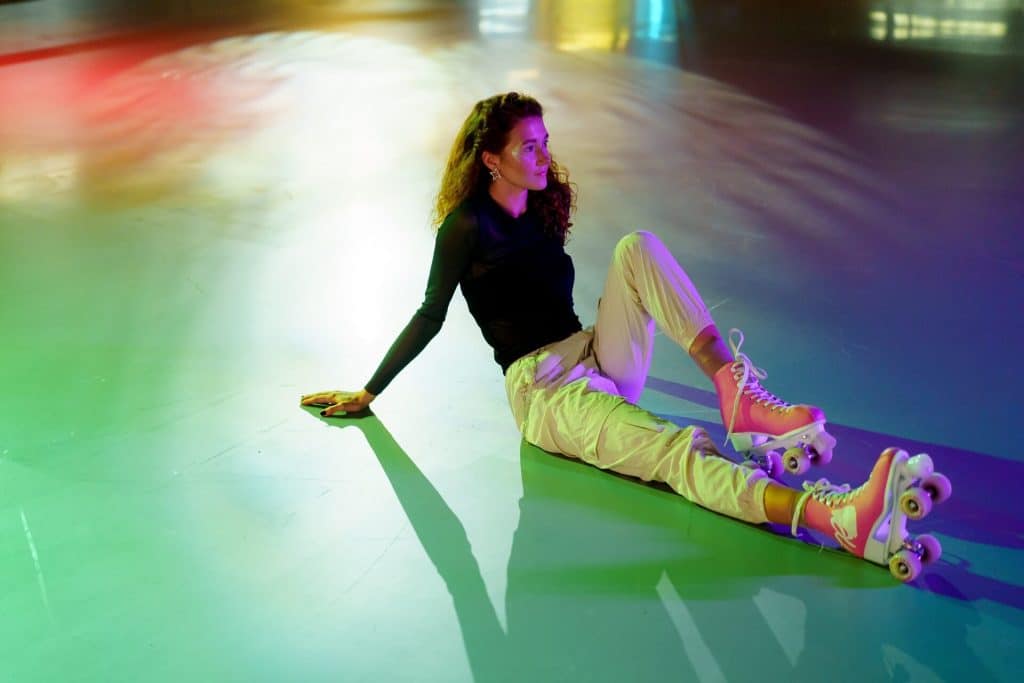Roller skating is a fun activity that has seen a major resurgence in recent years. However, while great exercise, roller skating can also take a toll on knees if proper precautions aren’t taken. This is especially true for beginners still building skills and knee strength.
In this article, we will cover how the mechanics of skating impact knees, provide proactive tips to keep joints healthy, and answer the question “Is roller skating bad for your knees”. With information on proper equipment fitting, technique, conditioning exercises, and ideal skating surfaces, you will learn how to enjoy the benefits of skating while avoiding injury.
Whether an experienced skater looking to advance your skills or someone just starting, this guide will equip you with the knowledge to strengthen your knees and skate pain-free. We will also outline warning signs to watch for and when to stop skating to prevent further damage.
With a focus on safety and injury prevention, this article will enable you to have the most fun on your skates while also taking care of your knees for the long run. Let’s get started maximizing the enjoyment of this fast-growing pastime while keeping those precious joints in great shape!
Disclaimer: all the information is not a substitute for professional medical advice. Consult a doctor for personalized guidance.
Table of Contents
How Does Roller Skating Affect Your Knees?
In order to understand how roller skating affects your knees, it is important to first understand the mechanics of your knee.
The knee joint is a hinge joint that connects the tibia and femur. It is comprised of two bones, which form a ball-and-socket joint. The femur has a rounded head that articulates with the tibia’s socket. The knee joint is stabilized by four ligaments: anterior cruciate ligament (ACL), posterior cruciate ligament (PCL), medial collateral ligament (MCL), and lateral collateral ligament (LCL). that connect the femur and tibia.
They help to limit rotation and translation through the joint. The ACL and PCL are two important ligaments that work together to provide stability, while the MCL, LCL, and other smaller ligaments help to provide added protection. During normal function, there is a 90-degree bend in your knee at all times.
This means that your knee has to be bent in order to walk, run, or do anything really. During the activity of skating, your knees will undergo a relatively constant amount of force. The force that is exerted on your knees when you skate is a combination of the speed at which you are traveling (which changes with each rotation) and the weight of your body.
Why Do My Knees Hurt After Roller Skating
Knee pain is a common symptom for people who have just started roller skating. This can be caused by a lack of experience and poor technique. However, there are other reasons why your knees might hurt after roller skating.
The pain in your knees after roller skating is most likely due to the repeated bending and straightening of the knee joint. This is also known as “patellofemoral syndrome”.
There are a number of factors that can cause knee pain after roller skating. These can include:
-A tight or weak quadriceps muscle
-A tight or weak calf muscle
-Poor balance and proprioception
-Poor alignment of the lower extremities, such as having flat feet or overpronation
-Incorrect skating technique, such as using too much upper body motion to skate forward
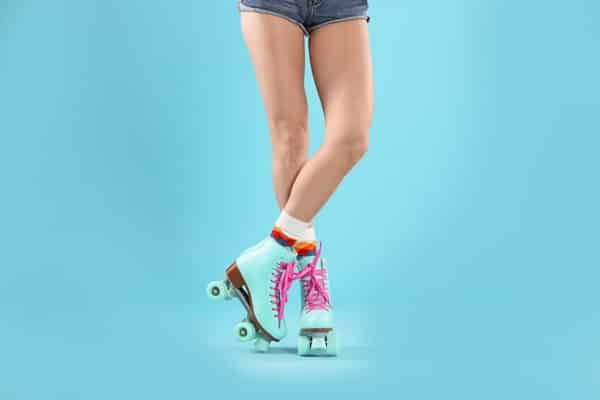
Can Roller Skates Be Good For Your Knees – Benefits Of Roller Skating
While roller skating does pose injury risks, the activity can also strengthen knees and benefit joint health when done properly. Here are some of the key ways regular skating helps knees:
Builds Supporting Muscles
Roller skating is a great way to strengthen the leg and knee muscles like the quadriceps, hamstrings, hip abductors, and calf muscles. The consistent motion of pushing off and controlling speed engages all these muscle groups surrounding the knee joint. Building these support muscles stabilizes the knee and prevents injury.
Improves Flexibility
Skating requires extensive flexing and bending of the knees to maintain the low athletic stance needed for balance. Dropping into deep knee bends and then extending back up increases flexibility and range of motion critical for healthy joint function. This improved flexibility also aids in preventing strains.
Enhances Balance and Proprioception
Maintaining proper form and body control on skates is a constant balance challenge. This engages smaller stabilizer muscles plus improves proprioception – your body’s sense of position in space. Enhanced balance and proprioception translate to better stability and injury prevention.
Low-Impact Cardio Activity
Skating provides an excellent cardio workout but the smooth gliding motion is considered low-impact compared to higher-stress activities like running. The soft urethane wheels absorb shock rather than transfer impact to joints. A lower-impact activity keeps knees healthy long-term.
How to Prevent Knee Pain and Injury When Roller Skating
Roller skating can put a lot of stress on the knees if you are not careful. Here are some important tips to help reduce knee injuries when skating:
Wear Protective Gear
Be sure to invest in quality knee pads, elbow pads, wrist guards, and an approved helmet before stepping foot on skates. Well-fitted, thick knee pads will cushion falls and reduce the force of impacts directly on the joint. Elbow and wrist guards will help break any falls, preventing you from reflexively throwing out your hands and hyperextending knees. A helmet can protect against serious head injuries in the event of an uncontrolled fall. Take time to properly adjust all gear for a snug and comfortable fit.
The Importance of Kneepads for Injury Prevention
Wearing quality kneepads designed for roller skating is highly recommended to help prevent knee injuries. Kneepads cushion against impact and abrasion in the event of falls on rough surfaces. When selecting kneepads, consider the following:
- Look for padded knee sleeves with abrasion-resistant exterior materials that will hold up to use.
- Ensure kneepads fit snugly without restricting circulation. Measure the circumference of the knees to choose the right size.
- Lightweight construction allows freedom of movement while still offering protection.
- Adjustable straps above and below the knee prevent the pad from shifting out of place.
- Opt for EVA foam or soft gel pads that disperse impact. Hard plastic shells can dig into the skin when you fall.
- Breathable materials like neoprene prevent sweat buildup during use.
- Consider crash pants for extra protection if skating ramps or mixing with contact sports.
Popular kneepad choices like the Triple Eight Saver Series Pad Set or 187 Killer Pads Fly Knee Pads offer a comfortable fit designed specifically for skating protection. Taking time to find well-constructed, comfortable kneepads helps take direct impact off the knees when falls happen unexpectedly.
Choose Appropriate Surfaces for Safe Skating
Look for smooth, flat ground when first learning to skate. Ideal spots include skate parks, outdoor rinks, tennis/basketball courts, and paved bike paths with minimal traffic. Avoid rough asphalt, chip seal, gravel, or cracked/crumbling sidewalks which can vibrate knees and cause falls.
If skating on sidewalks, scope out well-maintained sections and hop off at driveway crossings. Parking garages can also offer smooth surfaces if skating away from vehicles. Check any outdoor surface thoroughly beforehand for debris like litter, gravel, or branches. Sweep if needed.
Avoid recreational trails with heavy pebbles, exposed roots, or other hazards. Be cautious skating downhill which quickly gains speed – stick to flat areas as a beginner. Also use extra care when surfaces are damp, as even smooth ground becomes slick when wet. Taking time to find an appropriate area will ensure a safe, enjoyable skating experience.
Practice Proper Skating Technique
Bend your knees slightly and keep your center of gravity low to maintain balance. Avoid locking knees straight, which tenses the joint. Keep your body upright with shoulders aligned over knees and toes. Drop into a slight kneel as you push off for stability. Use core muscles to initiate turns and pivots – avoid twisting knees.
When skating backward take extra care not to hyperextend knees. Keep knees bent and shoulder-width apart for stability in all directions. Slow down before transitions like crossovers to avoid sudden shifts in momentum that could strain knees.
Maintain proper posture alignment as you skate. Avoid leaning forward or backward which puts pressure on knees. Take regular breaks as fatigue leads to poor form and fall risks go up.
For stopping, bend into smooth, sloping plow stops rather than sudden stops which can jar the joint. If unsure of form, take lessons from an instructor to perfect technique and keep knees safe.
Stretch Thoroughly
Always dedicate time before and after skating sessions to thoroughly stretch and warm up knees and lower body muscles. Dynamic stretches before skating prep muscles for the activity. Do leg swings, knee raises and light lunges to get blood flowing. After skating, hold static stretches for the quadriceps, hamstrings, calves and glutes for 30-60 seconds each to cool down. Maintaining flexibility and range of motion is key to injury-free knees.
Properly Fitting Your Skates
An important step in preventing knee injuries is making sure you have the proper skate fit. Ill-fitting skates are a leading cause of falls and impacts on the knees. Here are some tips for getting the right rollerskate fit:
- Measure both feet and go with the larger foot’s measurement when selecting your skate size. Skates should fit snugly without major pressure points.
- Opt for skates with a flexible vinyl boot rather than stiff leather. The flex allows proper knee bending and shock absorption.
- Lace skates start loosely at the bottom and tighter at the ankles for security. Laces should not be cut into the skin.
- Wear thick sock liners and pad pressure points with moleskin if needed. A proper boot shouldn’t rub or pinch.
- Adjust the trucks based on your skill level. Tighter trucks provide more stability for beginners. Loosen trucks as skills progress for better maneuverability.
- Check wheel size – larger wheels (70mm+) help smoothen the ride over rough surfaces protecting knees.
- Test and adjust the toe stop to prevent slips. It should let you comfortably lift the front wheels off the ground.
Taking the time to dial in the fit of your skates makes a big difference in allowing proper knee function and preventing injury due to ill-fitted equipment. Consult with a knowledgeable skate shop if unsure of how to adjust your skates properly.
Exercises to Strengthen Knees and Prevent Injury in Roller Skating
Keeping knees strong and healthy is crucial for roller skaters. Here are some of the best exercises to strengthen muscles around the knees and prevent injury:
Quadriceps Exercises:
- Squats – Feet shoulder-width apart, lower down until thighs are parallel to the floor.
- Wall Sits – Hold a seated position against a wall with knees bent at 90 degrees.
- Skater Squats – Squat down on one leg while swinging the other leg back across the body. Alternate sides.
Hamstring & Glute Exercises:
- Hamstring Curls – Laying on the stomach, bending knees to pull heels toward glutes.
- Calf Raises – Rise up on your toes, lifting heels. Progress to single leg for balance.
- Curtsy Lunge – Step one foot out to the side, bending knee over ankle in a curtsy.
Hip Adductor Exercises:
- Resistance Band Side Steps – Steps laterally with a resistance band around ankles.
- Hip Adductor Stretch – Sit with the soles of your feet together, and press your knees toward the floor.
It’s recommended to do 10-15 reps of these exercises two to three times a week to build knee strength for skating. Progress slowly to avoid overuse injuries. Stretch thoroughly after strengthening. Doing these targeted exercises will aid in injury prevention and make skating more enjoyable.
Conclusion: Is Roller Skating Bad for Your Knees?
Skating is not bad for your knees. It is actually a great way to strengthen your knees and keep them healthy. Skating strengthens the muscles around your kneecaps and it also helps to build bone density in the area. It also keeps you active, which is always a good thing!
Here are proactive steps all skaters can take to enjoy the activity while keeping their knees safe:
- Consult a doctor if you have prior knee injuries before skating. Follow any guidance they provide.
- Take lessons on proper skating technique and practice balance drills when starting out.
- Do knee & leg strengthening exercises 2-3 times per week to support joints.
- Wear full protective gear and know how to fall safely to prevent injury.
- Skate on smooth surfaces free of debris and avoid damp conditions.
- Take regular breaks to rest muscles and prevent fatigue. Stay hydrated.
- Listen to your body and stop skating if you feel abnormal knee pain.
- Get properly fitted skates and replace wheels regularly for stability.
- Know your limits and progress slowly into advanced skating moves.
- it’s important to remember to consult with a doctor if you experience knee pain or joint pain while skating.
Roller skating provides great exercise when done carefully. Being proactive by following these tips will help ensure you can enjoy skating for years without knee pain or injuries. With the proper precautions, skating can be safe, healthy fun.
Our conclusion to the question is roller skating bad for your knees, Roller skating is not bad for your knees as long as you are wearing the right gear.


